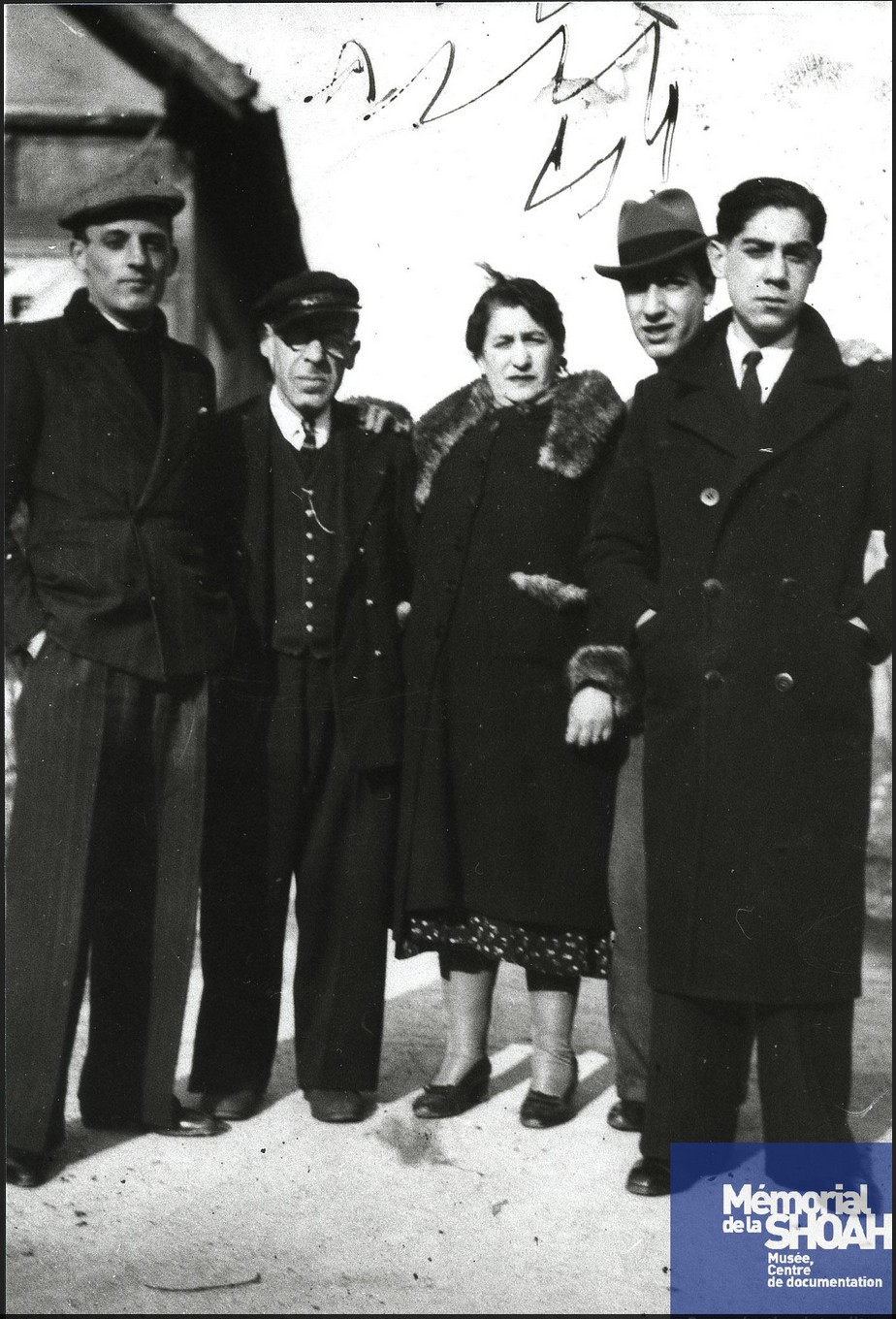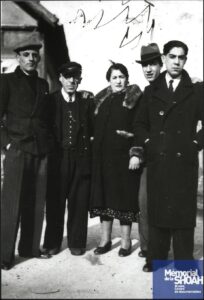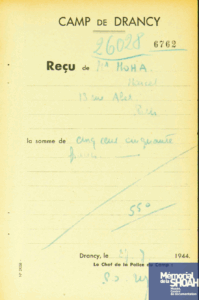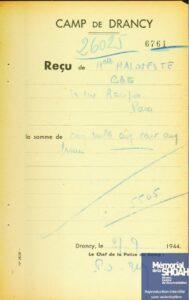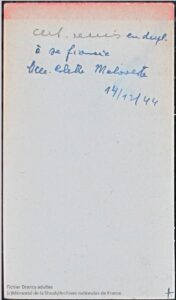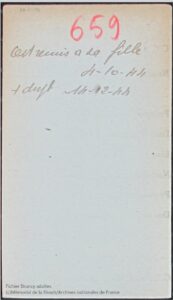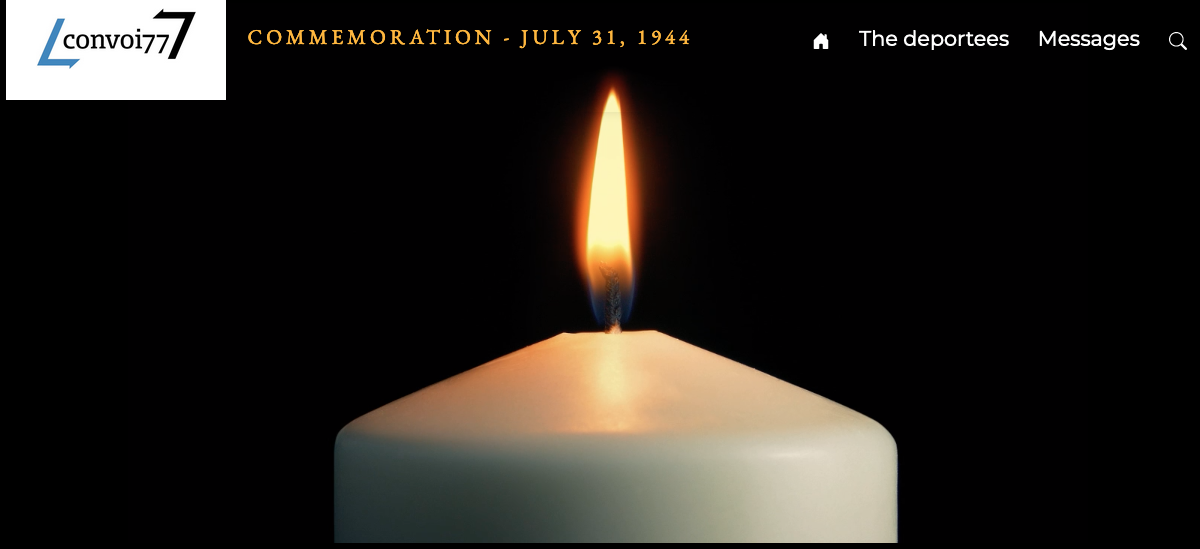Marcel MOHA
The Moha family were Algerian Jews. The parents, Charles and Zina (also known as Yvonne), and their children Berthe and Marcel (the subject of this biography), moved to Paris sometime between 1921 and 1925. Two more children, Jeanne and Roger, were born later, in Paris.
Berthe, the eldest child, was born on April 24, 1920 in Algiers. Her twin, Félicie, died at the age of 21 months. Next came Marcel, who was born in Algiers on November 11, 1921, although some records list the date as November 10. Perhaps this was simply a transcription error.
We do not know the exact date on which the Moha family arrived in Paris, but we do know, thanks to school enrolment registers, that in 1925 they were living on rue des Nonnains d’Hyères, in the Marais district, which had been home to a sizeable Jewish community since the 13th century. This district is famous for its many synagogues and Jewish businesses, which make up what is known as the Pletzl. Soon after they arrived in Paris, the parents opened a grocery store on rue du Roi de Sicile, but the business soon closed down.
In 1925, the family grew larger when Jeanne (known as Jeannette) was born, followed by Roger in 1927.
Marcel grew up in Paris in a low-income household. His father was a house painter and drew a disability pension as a World War I veteran, and his mother was a homemaker. Marcel first went to school on rue du Grenier sur l’Eau, which was near to their home, and then, when the family moved to the 12th district of Paris, he went to school on rue Charles Baudelaire. According to the school register, Marcel was a headstrong, even “rebellious” child. Since we have no record of him pursuing his education, and since he reached compulsory school age in 1934, we assume that he began an apprenticeship, perhaps with his father, as a house painter, as he gave this as his occupation on later documentation.
The family left the Marais in 1928, when they moved to 13, rue Abel in the 12th district. They remained at this during the war.
When the Vichy government required all Jews to take part in a census, we assume that the Moha family did so. Although we have no census form for Marcel, we do have those of his sister, Jeannette, and his brother, Roger. We suppose therefore that the rest of the family members’ forms were lost or destroyed at some point, but it is possible that Charles and Zina chose not to register their oldest son.
From an account quoted by Jean Laloum, a French historian and writer, we know that when the number of Jews being arrested was rising fast, Marcel left France to seek refuge in Algiers. He went with his cousin, Prosper Arous, and his fiancée, Colette Maloveste-Burger, but “as the aunt could not take them all in, they soon returned to France”.
In March 1943, by which time he was 21, Marcel initially complied with a summons to report to the STO (Service de Travail Obligatoire, or Compulsory Work service). However, his civilian victim file states that he was a deserter. What became of him after that? Did he stay at home and hide? Did he join a Resistance group? Did his friends or perhaps some other kind-hearted people take him in? We have no answers to these questions.
From the right: Roger, Marcel, Zina and Charles Moha
THE ARREST
At the beginning of July, 1944, Marcel’s brother and sister, Roger and Jeanne, were arrested in Paris and then, on July 5th, taken to Drancy internment camp.
A few days later, on July 21, 1944, Marcel, his fiancé Colette and his parents were also arrested, perhaps at Brunoy, where the family often went, although we do not know if they owned a house there or rented it. It is also possible, however, that they were arrested at their home in Paris. Either way, the Gestapo arrested them as a result of a tip-off from a family “friend”. Marcel’s older sister, Berthe, miraculously escaped and went into hiding with some neighbors, so was the only one of the family not to be deported.
They too were then transferred to Drancy. Marcel and his father, Charles, were sent to room 4 on staircase 18, while his fiancé, Collette and his mother, Zina, were assigned to the same staircase but put in room 4. There they met up with Roger and Jeannette, who had been arrested at the beginning of the month and had arrived in Drancy on July 5.
From the Drancy transfer logbook
The Drancy search records reveal that when he arrived in Drancy, Marcel was carrying 550 francs, which was quite a large sum of money at the time, and was assigned serial number 131,540. Colette, meanwhile, had to hand over an even larger large sum, 5,505 francs in her case. When they were arrested, they were most likely given a short time to gather some personal belongings and, not knowing what was about to happen to them, they probably took all their savings with them.
Marcel and Colette’s search receipts from Drancy
On July 31, 1944, Convoy 77 left Drancy bound for Auschwitz. At that point, Colette and Marcel were separated forever. Collette, although arrested along with the family, was not actually Jewish and as a result was not deported but released a short time later.
We know from the testimonies of the few people who survived after being deported on Convoy 77 that the travelling conditions were horrendous. They were forced into cattle cars, all crammed together, with buckets serving as toilets that inevitably overflowed, and little or no food or water. On August 3, when the train arrived in Auschwitz-Birkenau, the prisoners heard orders being shouted in German and dogs barking, and the doors were flung open. They had to jump out of the carriages and line up as fast as they could and then the selection process began. When it was over, the prisoners who looked as if they could be exploited as forced laborers were all lined up on one side of the platform. On the other side were the people who were too old, too young, too exhausted or simply had a child with them, all of whom were to be killed immediately.
Marcel, Jeanne and Roger were all selected to go into the camp but were soon separated from each other, while their parents, Charles and Zina were sent to the gas chambers immediately.
We know next to nothing about the six months that Marcel spent in Auschwitz. Like all the other prisoners, he was most likely assigned to a work group, a kommando. did he sort potatoes? Or clothes? Was he a hairdresser? We have no idea: he could have done all manner of jobs…
In August 1944, Marcel was admitted to the Röntgenstation, the camp’s radiography center, where he stayed until January 15, 1945, but the record relating to this is illegible and it is impossible to tell what he was suffering from. He may also have been the subject of Nazi experiments on Jews.
At around the same time, back home in Paris, Colette and Berthe made official requests for information as to what had happened to the rest of the family.
Collette’s request for information about Jeannette
The back of Marcel’s Drancy interment record
The back of Zina’s Drancy interment record
Six months later, in January 1945, the Russians crossed into Poland, which prompted Nazi Germany to move the prisoners by sending them on what later became known as “death marches”. Thousands of deportees perished along the way in horrific conditions, including starvation, extreme cold and exhaustion. As we retraced Marcel’s itinerary, we discovered that he was sent on one of these death marches. He left Auschwitz shortly before the Soviets arrived. On January 29, 1945, he arrived at the Sachenhausen camp in north-eastern Germany, around 30 miles from the capital, Berlin. At the same time, however, the Soviets were marching relentlessly towards the city. He was therefore transferred to the Mauthausen camp, in Austria, around 375 miles away. He arrived there on February 1945 and was assigned the serial number 131540. He remained there for a month before being transferred to Gusen, a satellite camp, where he and 284 other prisoners arrived on March 15. This was the site of an aircraft production center that fed the German war machine industry, code-named Bergkristall.
After his arrival in Gusen, we found no further trace of Marcel. He probably died before the camp was liberated on May 10, 1945. He was 23 years old.
His brother, Roger, never returned from the camps.
His sister Jeanne survived the deportation and returned to France.
During our research, we discovered that just before he was deported, Marcel had fathered a daughter, Jocelyne Callot, who was born on March 15, 1945. In fact, when Colette was left behind in Drancy, she was already pregnant. Sadly, Jocelyne had no records relating to her father and knew very little about him.
Sources:
- Paris archives (school registers, census data etc.)
- French overseas territories archives
- Essonne departmental archives
- Shoah Memorial, Paris
- Jean Laloum’s, “Des Juifs d’Afrique du Nord au Pletzl ? Une présence méconnue et des épreuves oubliées (1920-1945)” (“North African Jews in the Pletzl? A little-known presence and forgotten hardships (1920-1945”)), published in Archives Juives.
- Victims of Contemporary Conflicts Archives Division of the French Ministry of Defense Historical Service, in Caen, dossier DAVCC 21 P 517 287
- Arolsen archives


 Français
Français Polski
Polski